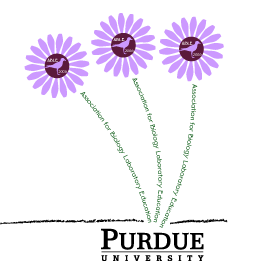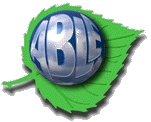Site Links
![]() ABLE 2007: University of Kentucky, Lexington, KY June 5-9. Host: Ruth Beattie
E-mail: rebeat1@uky.edu
ABLE 2007: University of Kentucky, Lexington, KY June 5-9. Host: Ruth Beattie
E-mail: rebeat1@uky.edu


Major Workshops
Wednesday June 7
Steven Caruso and Lark Claassen, University of Maryland Baltimore County
Bioinformatics for Beginners
Bioinformatics is a relatively new sub-discipline of biology that will have
a major impact on our student’s lives in their roles as consumers, as practitioners
in medical fields, and as biologists. However, the field requires an advanced
understanding of molecular biology, enzymology, and computer science that makes
it accessible only to advanced students who have taken the necessary pre-requisite
courses. In this workshop we present our approach to making bioinformatics
available to a broader cross-section of our student population. In our
curriculum the field of bioinformatics is introduced to biology majors and non-majors
who enroll in two one-semester laboratory courses: an introductory biology course
that serves a mixture of allied health-, biology/biochemistry-, and non-majors;
and a sophomore-level genetics and molecular biology course taken by biology/biochemistry
majors and by pre-medical students. In the introductory lab, students learn
about the history of bioinformatics and the types of information available in
four of the databases accessible from the NCBI website. A capstone project
allows them to apply what they have learned to a phenotype or disease that runs
in their own family. In the genetics and molecular biology lab students
sequence the 16s rRNA gene from an unknown bacterial culture and then send the
resulting sample to a sequencing lab for analysis. In a second session, students
receive the chromatogram of the 16s rRNA sequence they submitted, which they
must then edit using Gene Tool Lite. Students then use the BLAST program
on the National Center for Biotechnology Information website to search for homologies
to sequences already submitted to Genbank, and thus identify the species of their
unknown bacteria. This lab can also be performed in a shortened “dry” version
in which students are provided the chromatograms and perform the second session
only. In this laboratory workshop, participants will have an opportunity to
do portions of the exercise performed in the genetics and molecular biology
course, including the bench work required to sequence the 16s rRNA gene of
an unknown bacterium and the computer work editing the resulting chromatogram.
<<Back